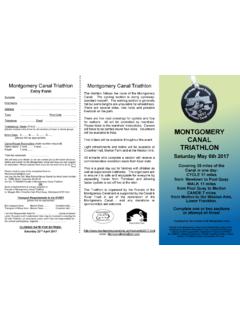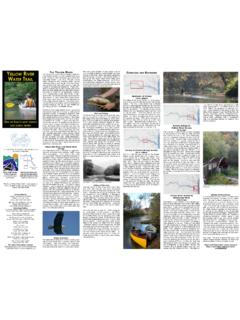Transcription of INDIGENOUS LEADERSHIP? - Stronger Smarter
1 Scott Gorringe, 08 INDIGENOUS leadership ? 1 INDIGENOUS leadership ? A Set of Lenses from which to view INDIGENOUS leadership . Let me state up-front INDIGENOUS leadership will be the term used in this paper, however it is not mine. It belongs to the many other people who have written previous papers and journals. I am a little uneasy with the word INDIGENOUS not because I don t want to be called INDIGENOUS , but for the simple fact that it does not separate our multiple Aboriginal cultures. As well, Torres Strait Islander peoples have strong multi-cultures of their own which are strengthened by their customs, beliefs and values; so they will have some differing values to leadership from those of Aboriginal people. Furthermore, Aboriginal peoples (language/clan groups) are many, and all are different.
2 Being an Aboriginal man, my respect for the Torres Strait Islander people and my own people, will not allow me to assume that all Australian INDIGENOUS people are represented in these views. I will propose two different lenses through which to view INDIGENOUS leadership . One from a paper entitled Currents of Culture (Gorringe and Graham, 2005) presents a viewpoint in which they believe there is a continuum of mainstream influences that impact on INDIGENOUS leadership styles. As well, Pearson presents is a valid model which to some extent I think, reflects Australian history. Firstly, Pearsons model places INDIGENOUS people as mirrors of white people working in and with INDIGENOUS communities/organisations, and which I believe has a direct correlation to influences of culture on leadership .
3 My understanding of culture in a broad sense comes from Edgar Schein (2004), Schein simply says: Culture is the patterns of behaving, thinking, perceiving and judging that characterises a group of people . The four basic models of leadership which Pearson sees in Cape York as described in his book Our Right To Take Responsibility (2000) seem to stem from colonial experiences and the experience of institutional life on missions, which in many ways affected all INDIGENOUS peoples. The first is the white dictator model described as: Aboriginal people were considered innately inferior and the full force of government power to remove, to control, to punish, to order, to take control over children, to take control over money was used to dictate all aspects of Aboriginal life in these institutions.
4 Carrying the delegated authority of the state, these dictators beat down Aboriginal initiative, questioning, debate and resistance. (Pearson 2000, pp 49) Scott Gorringe, 08 INDIGENOUS leadership ? 2 The second is the black dictator model that Pearson describes as the Idi Amin style of governance where it is now the black face that is displaying dictatorial type leadership . The third style that Pearson writes about is the white saviour/servant model. He says that this model seems to have overtaken the dictator style as it comes with good intentions and is described as; These people feel sorry for the plight of Aboriginal people, they are sympathetic and supportive. They oppose racism but are often blind to its more subtle manifestations. They wish well for Aboriginal people, are committed and often work hard.
5 They sacrifice much for the betterment of Aboriginal people. The problem is that their concept of themselves as saviours of Aboriginal people is destructive. (Pearson 2000, pp 50). Pearson (2000) goes on further to say that .. this approach to leadership is the predominant white approach to Aboriginal governance particularly at the coal face and that it has passive welfare written all over it. Finally there is the black saviour/servant model; as Pearson states this is the black version of the white saviour/servant model. Interestingly he says that; In fact most of the senior leadership of Aboriginal Australia at the national and at the local levels, operate on this model. It is the model that is encouraged in young people contemplating contributions to the governance of our communities.
6 (Pearson 2000, pp 51) I would suggest that there are aspects of the Pearson model that we all need to make sense of individually and collectively in order to move forward. I would offer that these approaches are directly influenced by who you are, and what grounds your thinking. I will next briefly present another story and metaphor which helps the reader to look at INDIGENOUS leadership in a different way. Again, like Pearson s model, this is not meant to be interpreted or construed into wrongs and rights. It simply presents another way to look at INDIGENOUS leadership . The "Currents of Culture metaphor examines INDIGENOUS leadership within the current mainstream society. Scott Gorringe, 08 INDIGENOUS leadership ? 3 I refer to the people who are strongly embedded in old ways as the Rocks; they are often very reluctant to change and at time even engage with mainstream.
7 Although their knowledge of traditional ways of doing is very strong, their resistance to engage with mainstream limits their capacity to influence. However, their continued practice of the old ways, make them critical in the reinvigoration of INDIGENOUS leadership . The White Water Kayakers (WWK) is a very interesting group. They challenge mainstream paradigms of leadership as well as the new wave of INDIGENOUS leaders. Their grounding is very much old way yet they understand the power of engaging with appropriate mainstream paradigms. At times the WWK can be unpredictable and challenging, which inturn tend to isolate them in terms of leading and promoting their ideas to mainstream. The other focal group represented here are the Down-Stream Kayakers (DSK). This group are very successful in mainstream society, yet gain little notoriety from INDIGENOUS folk.
8 The DSK tend take on behaviours and thinking which are respected by some mainstream, yet at the same time despised by their own mob. This appears to stem from one major perception: that their own people believe they are turning white. The objects referred to as rocks, and kayakers all play crucial roles in determining a way forward within INDIGENOUS affairs and are reflective of their buy-in to mainstream ideals. The challenge is to have the courage to get into the whirlpool and ensure that the strengths of all are utilised to their fullest potential. In a sense the whirlpools are spaces of not knowing . I use this analogy/metaphor of a river and various watercraft and objects to explain my thoughts about INDIGENOUS leadership within the mainstream cultural influence.
9 Table 1 briefly explains the characteristics of each entity within the river and the mainstream current itself. Scott Gorringe, 08 INDIGENOUS leadership ? 4 Currents of Culture leadership (Gorringe and Graham, 2005) Table 1. leadership style Characteristics Rock Strong leaders who maintain INDIGENOUS cultural practices and knowledge Most likely to be an elder within particular cultural language groups May have minimal formal educational experience May not aspire to mainstream western leadership and governance structures White-Water Kayaker (WWK) Tends to navigate through mainstream and all sectors of society with ease. Tend to use INDIGENOUS knowledge to ground their thinking and behaviour. Their behaviour can at times be misinterpreted as contradictory, extreme and disruptive. Often questions what people may need to give up, in order to move along the Currents of Culture continuum in either direction.
10 Although not against individual success, collectivity and group success is very important in their thinking. Down-Stream Kayaker (DSK) Tend to take on the dominant cultural paradigms has their own. Tend to move within the dominant cultural circles more often. Often cannot understand why the rocks won t move with the times. Most likely have strong beliefs that we are all the same, everyone has the same opportunities. Tend to have strong views on what it takes for other INDIGENOUS people to be successful in the mainstream. Mainstream Current Strong mainstream ideologies, eg. globalised capitalism (Individualism, profiting, progress at any cost) Tendency to assume that other peoples cultural values need to change. Tend to have strong views on what is best for others based on mainstream experiences.









